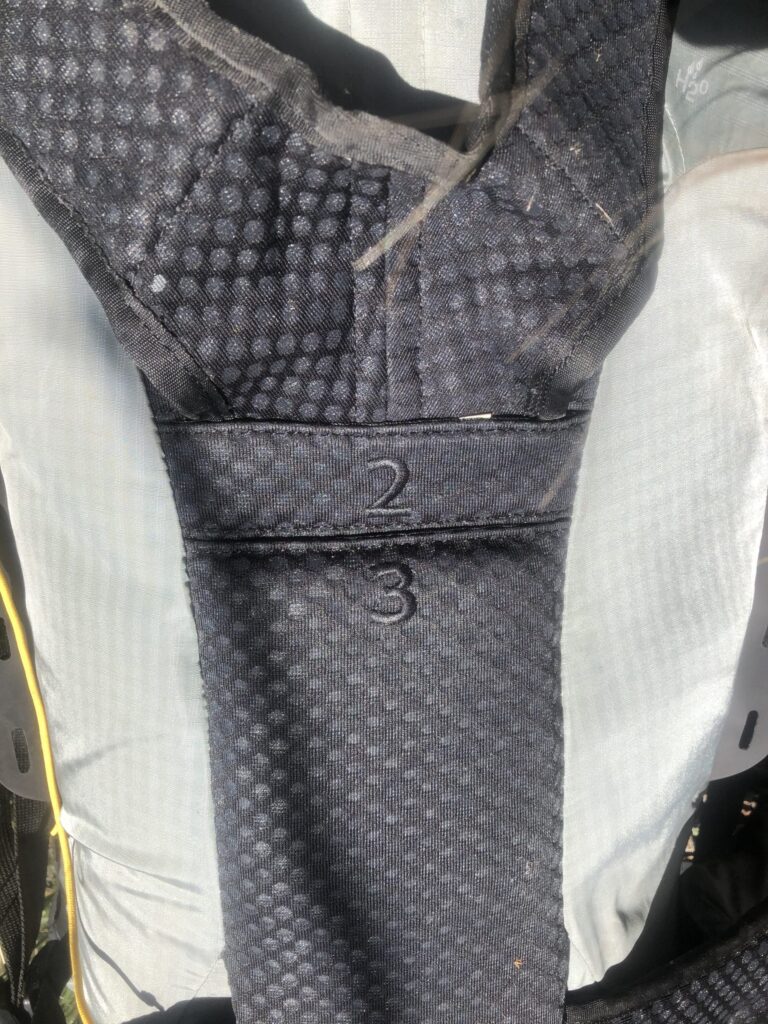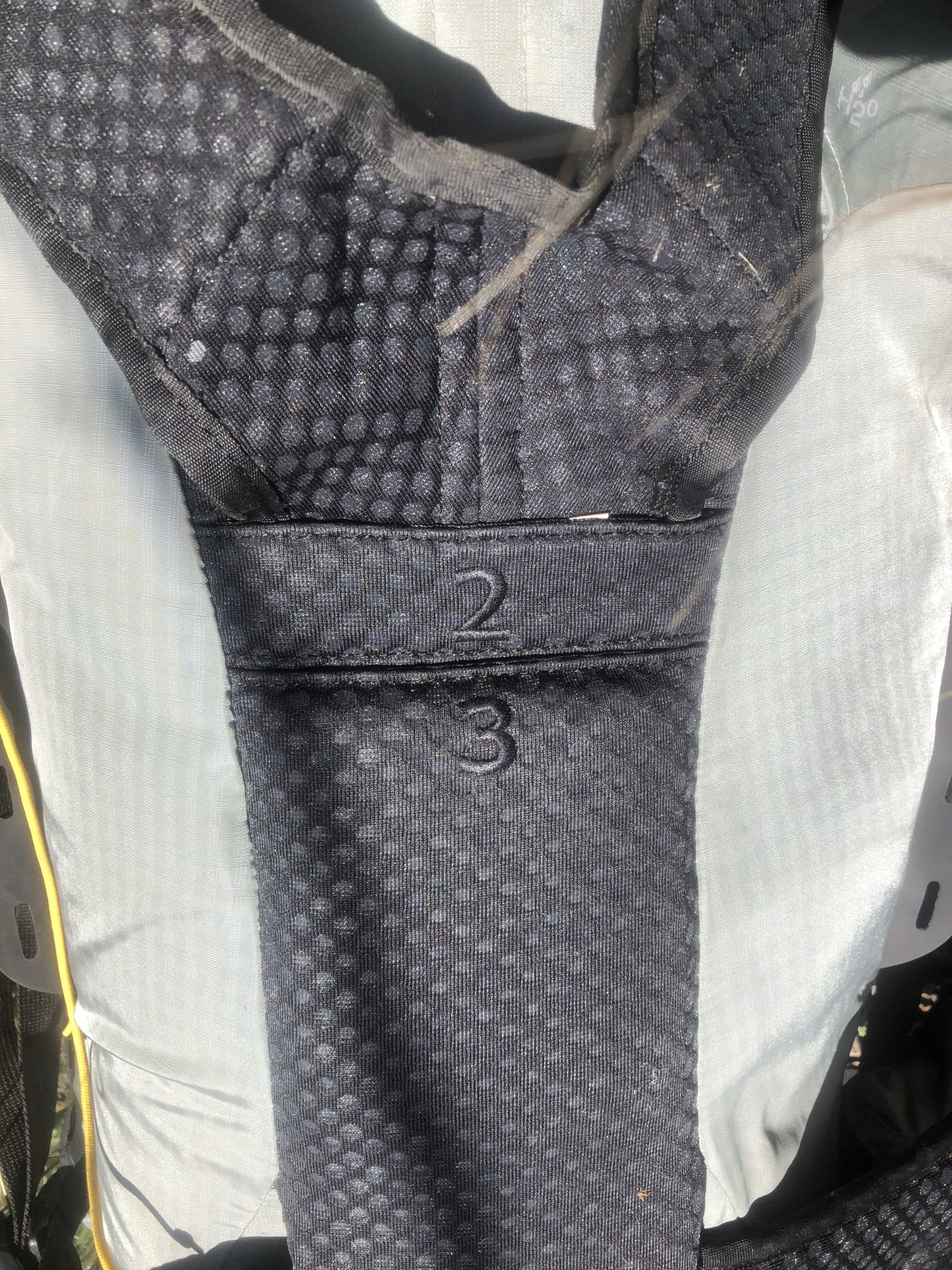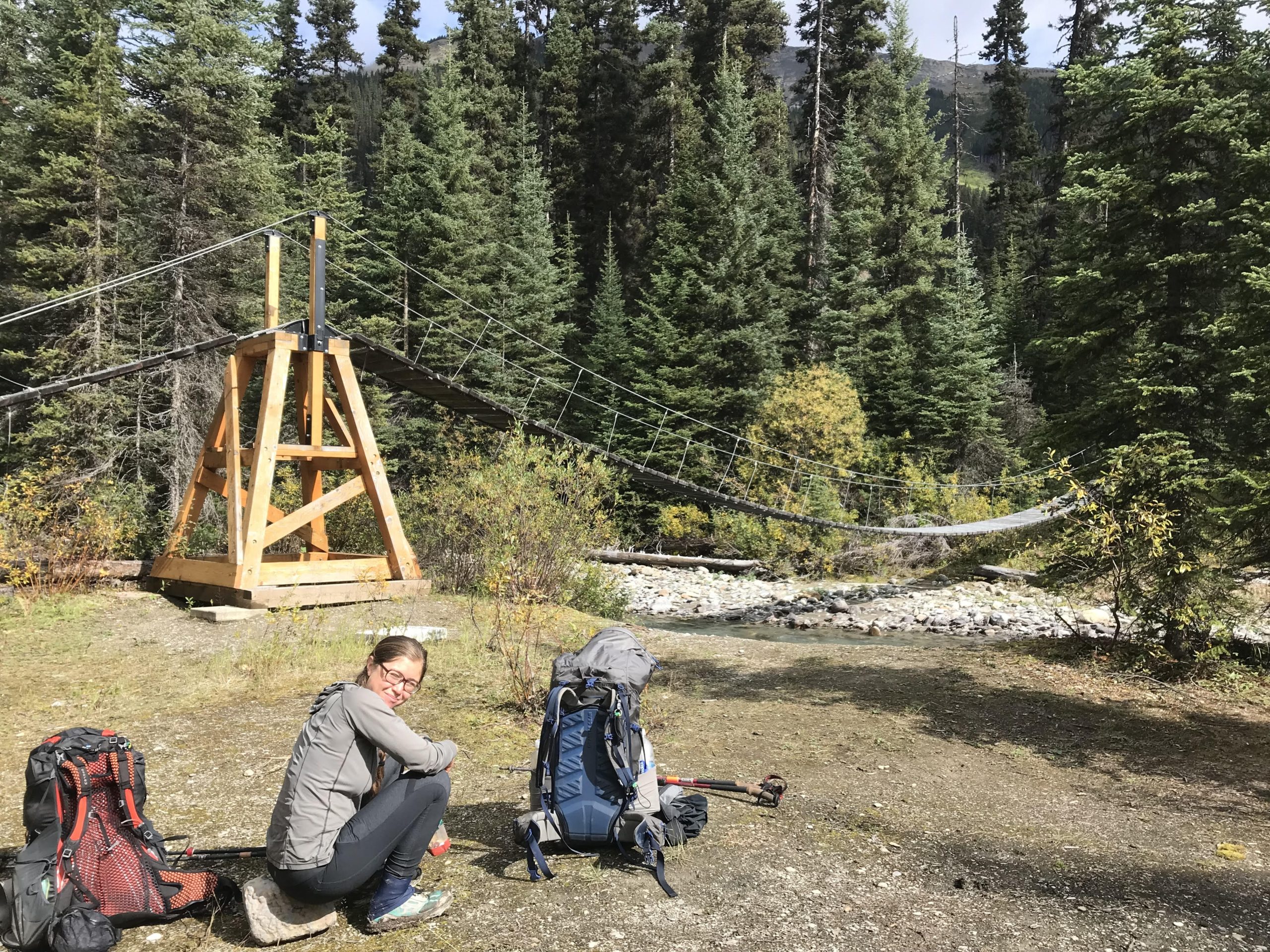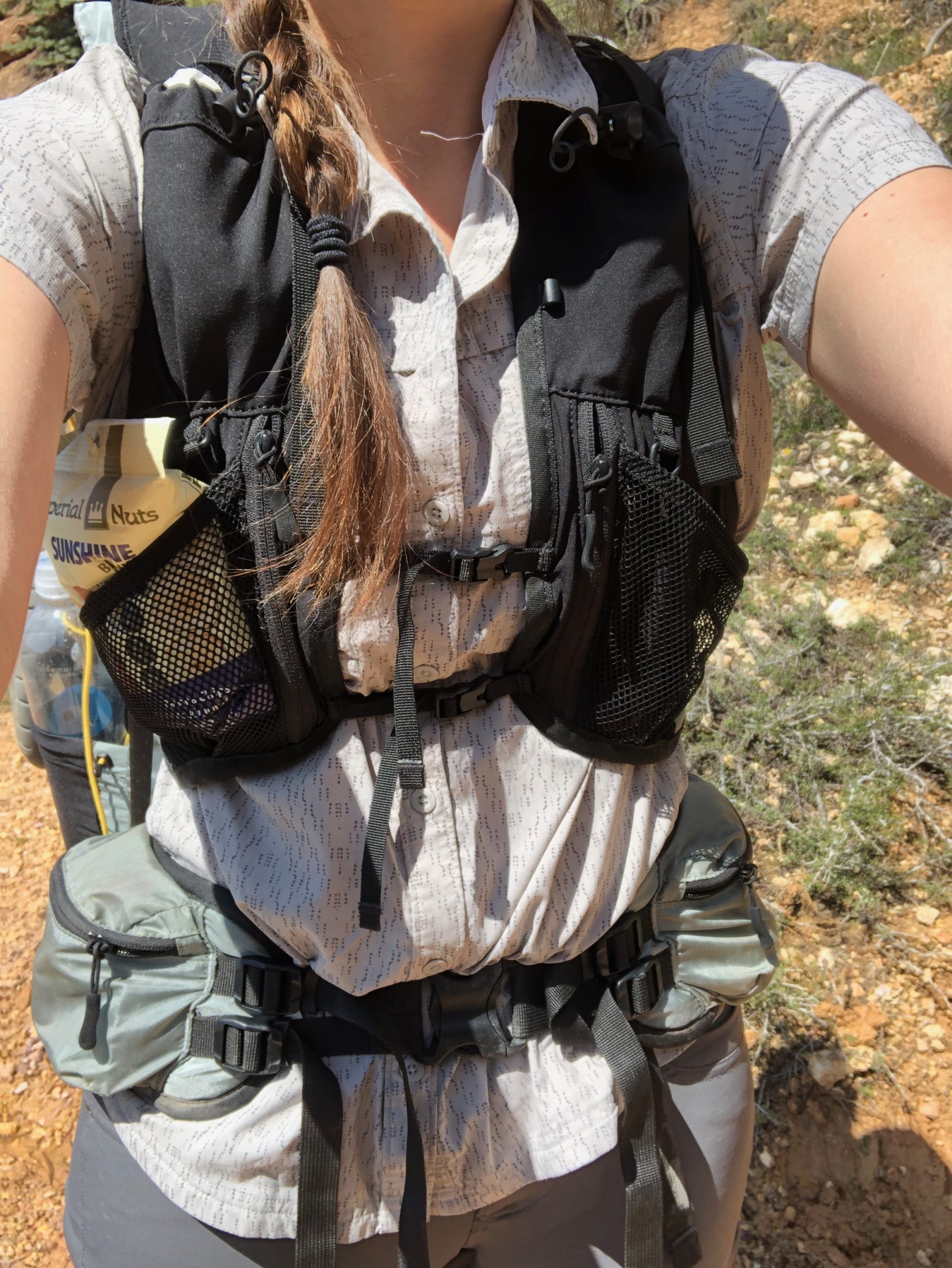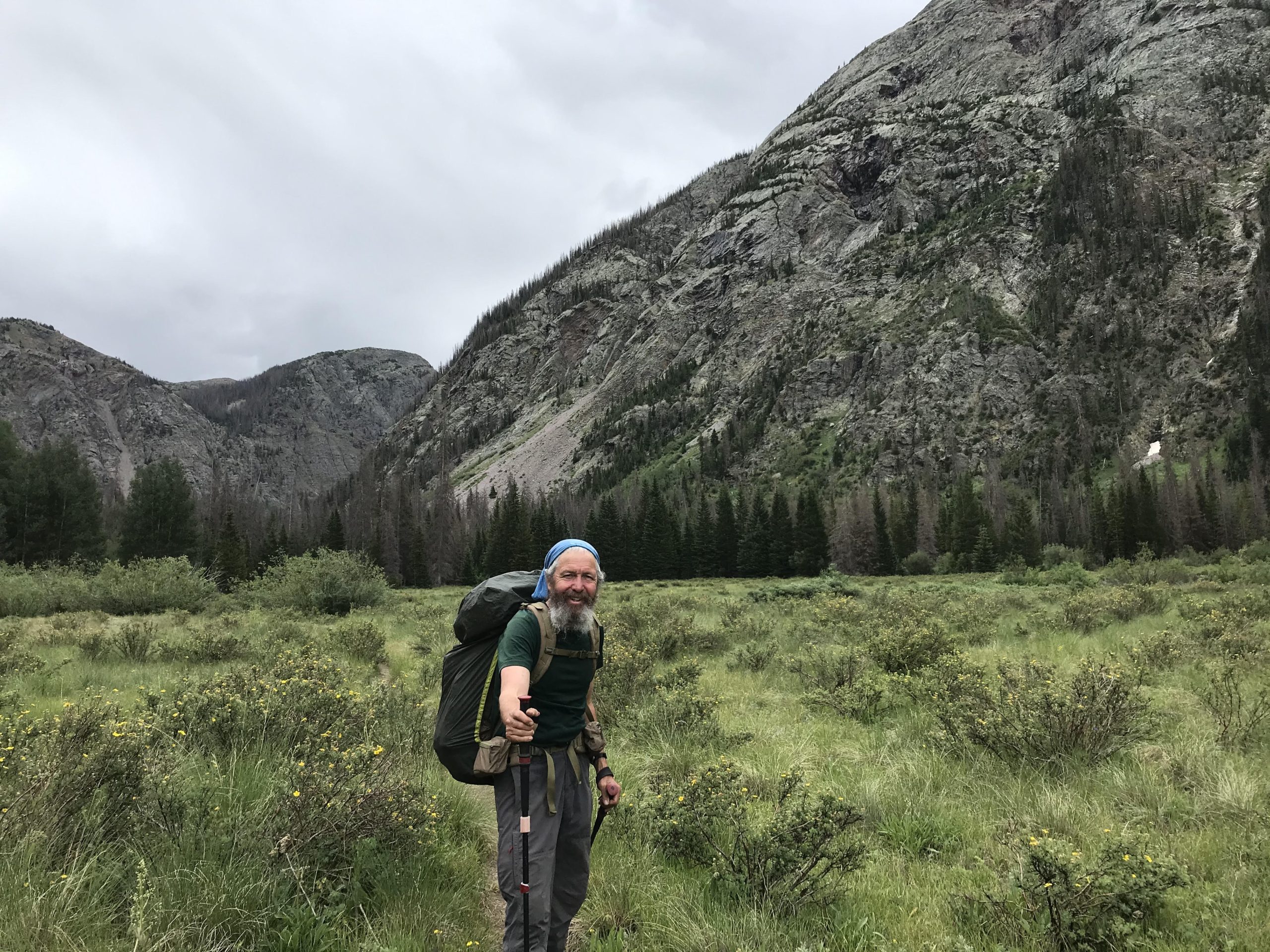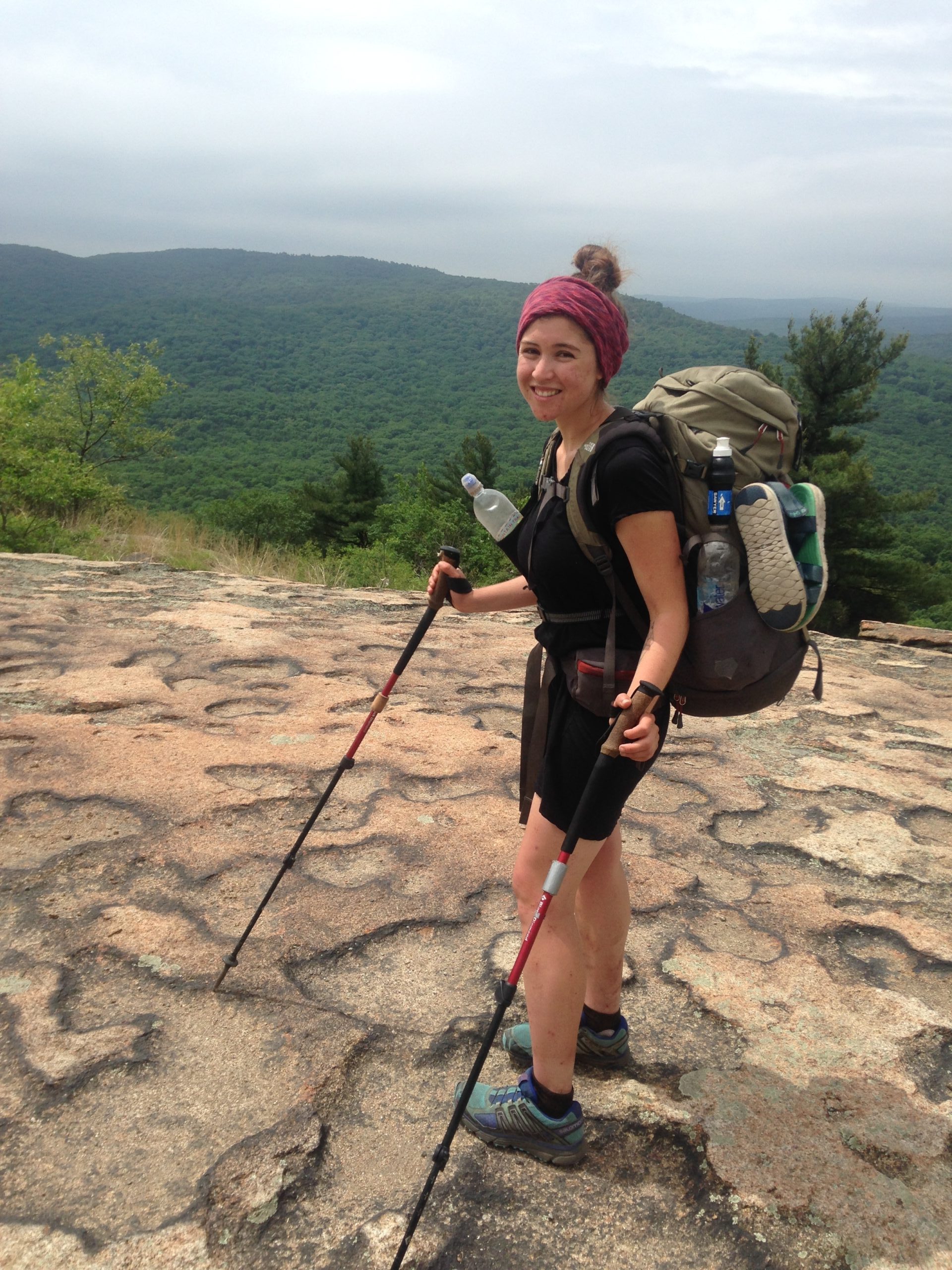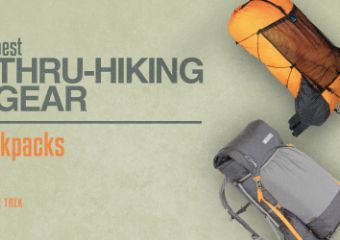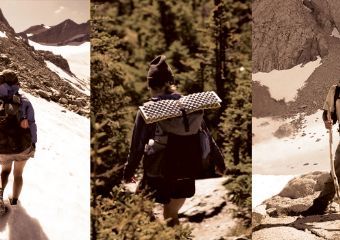As a thru-hiker, your pack will be one of your most essential pieces of equipment. When you choose a backpack for thru-hiking, you automatically determine a lot about your base weight, gear budget, and—most importantly—comfort on the trail.
A good pack can make your gear feel light as a feather, but the wrong choice will leave you with sore muscles, painful blisters, and a world of regret. So what makes one pack better than another? Here’s everything you need to know about how to choose a backpack for thru-hiking.
Jump to a Section
Choose a Backpack for Thru-Hiking Step-by-Step
How to Pack a Backpack for Thru-Hiking
How to Adjust Your Backpack for Thru-Hiking
Choose a Backpack for Thru-Hiking Step-by-Step
Like most hiking gear, backpacks are expensive and there are tons of options to choose from. How do you even get started shopping for a pack? Let’s break it down into five easy steps.
Jump to a Section
Step 1: Go Buy All Your Other Gear First
Step 3: Decide How Much Volume You Need
Step 4: Ultralight vs. Traditional
Step 6: Determine Your Price Point
Step 1: Go Buy All Your Other Gear First
…Wait, what?
That’s right. You should always buy your pack last after assembling all your other gear. That’s because camping equipment can range widely in terms of size, shape, and weight, and you need a pack that fits your personal kit perfectly.
As we’ll soon learn, there are many features to compare and consider when choosing a backpack for thru-hiking. But everything we’ll talk about in this article boils down to one thing: at the end of the day, your pack has to sit comfortably on your back with all your gear inside it.
What better way to determine whether a backpack is right for you than to load it up with all your actual hiking equipment? That way you’ll know how your stuff packs and feels inside each backpack before you even leave the store. Doing this will help you figure out how much volume and load-bearing capacity you require so that you end up with a pack that’s perfectly fitted to your needs.
Step 2: Find Your Fit
It’s not just the type of backpack—it’s also the size. Packs come in different sizes based on torso length and (sometimes) hip circumference. The fit-size of your pack is different from its volume or carrying capacity, which is measured in liters and indicates how much stuff you’ll be able to put inside.
Even if you choose a pack that’s got the perfect amount of carrying capacity for your gear, it won’t sit properly or feel comfortable if it doesn’t fit your body right. Once you’ve got a properly sized pack, you’ll be able to use the various straps and tensioners to fine-tune the fit even more.
Measure your torso size
Determine your spine’s length between the C7 vertebra and the hip bones. First, find your C7 by dropping your chin to your chest and feeling along the back of your neck. Your C7 vertebra is the prominent, bony lump located directly between your shoulders. Next, find the point on your spine that’s directly in line with the tops of your hip bones.
Standing up straight in a relaxed posture, measure in inches (for US manufacturers) between the two points using a flexible cloth measuring tape. For obvious reasons, it’s helpful to have someone assist you. If you get your measurement at home, it’s still worth taking a few minutes to have someone at your local outfitter double-check your work before you buy anything.
Packs usually come in sizes Small, Medium, and Large based on torso length. Some packs have adjustable torso lengths within each of these size ranges, while others are fixed and are meant as a one-size-fits-all within that range. Fixed torsos don’t offer the same level of customization and comfort, but they weigh less.
Measure your hip circumference
Many backpacks rely on torso length alone to determine the pack’s fit since the hip belt is usually adjustable. However, some have customizable hip belts. Use a flexible cloth measuring tape to measure around the top of your hips in line with your two hip bones (this is where the top of your hip belt will sit).
What’s the difference between men’s and women’s packs?
Women’s packs are often available in shorter torso lengths. They also have more padding in the hips and shoulders, and the hip belt and shoulder straps can be specially shaped to accommodate larger hips and breasts.
In general, curvier ladies stand to gain the most from women-specific designs. There’s no law that says you have to opt for a gender-specific option. Many women hike comfortably with men’s packs, while some men prefer the cut of a women’s backpack for thru-hiking.
Our picks for the best women-specific backpacks:
Step 3: Decide How Much Volume You Need
In the US, backpack size is commonly measured in liters. Most thru-hikers’ backpacks are between 48 and 65 liters, but that’s still a pretty broad range. You don’t want a pack that’s too big, because it will weigh and cost more (and you may find yourself tempted to fill the extra space with crap you don’t need). You don’t want one that’s too small, either, for obvious reasons. This goes back to Step One (buy everything else first).
Step 4: Ultralight vs. Traditional
Ultralight packs shave ounces by reducing the amount of material used, opting for minimalist designs, and swapping traditional materials like nylon fabric and aluminum frames for cutting edge Dyneema (cuben fiber) and carbon fiber. The result is a lighter, more streamlined pack, something that many thru-hikers value. While a traditional backpack can weigh four or five pounds, an ultralight one might tip the scales at just one or two pounds.
There are pros and cons to opting for an ultralight vs. traditional backpack. The obvious pro is that you can save multiple pounds off your base weight with this one gear item alone—and the price differential between an ultralight and traditional offering is often less for backpacks than it is for other items (like tents).
Still, an ultralight Dyneema pack is going to cost more than a traditional nylon pack, and it won’t have the comfy padding or load-bearing capacity of a heavier pack. Most ultralight packs max out at 30-35 pounds of carrying capacity. The thin foam of lightweight packs doesn’t provide a lot of comfort or support at the best of times, and it will break down quickly when overloaded. In contrast, a more durable pack can carry 50 pounds or more.
Worth noting
If your gear is on the heavy side (older equipment, camera/fishing gear, long food/water carries, snow traction devices, etc.) you should bite the bullet and invest in a traditional backpack. It might weigh more than a sleek ultralight offering, but the durable construction will handle the load better and distribute it comfortably so that you barely notice that extra weight. A heavier, more cushioned pack that provides a lot of structure is also advisable for hikers with back injuries or chronic pain.
Our picks for the best backpacks by weight:
- Less than 1.5 pounds: Zpacks Arc Haul, Mountain Laurel Designs Prophet
- Less than 3 pounds: Osprey Exos/Eja, Granite Gear Crown2 Men’s/Women’s, HMG 3400 Southwest, ULA Circuit, Gossamer Gear Mariposa, Gossamer Gear G4-20, Mountainsmith Zerk 40
- More than 3 pounds: Granite Gear Blaze, Osprey Atmos/Aura, Gregory Baltoro/Deva
Step 5: Choose Your Features
Minimalist backpacks are essentially just fabric tubes with shoulder straps, two or three external pockets, and hip belts (maybe). More tricked out packs, in contrast, come bursting with bells and whistles. Whichever type you choose, it’s crucial to know about the standard features and extras you should look for in a thru-hiking backpack.
Suspension
Your pack’s suspension system affects how it rests (or doesn’t) against your back. From cushioning you against your heavy load to keeping you cool (back sweat, anyone?), your suspension system is critical for comfort. There are many different types of suspension. Finding the right one for you is mostly a matter of personal preference.
For instance, Osprey packs exemplify the trampoline-style suspension system. A taught, durable mesh layer rests against the back. It holds the main compartment away from the body to cushion and maximize airflow. Minimalist packs often use foam backing for the suspension, with channels and grooves cut into the foam for ventilation. Others don’t have much backing at all. Instead, they’re designed to naturally curve away from the back when worn correctly.
Frame style
Almost all packs these days have internal frames. External frame packs still exist and have a role to play as super-heavy load haulers, but generally, they’re something of an anachronism. Some ultralight packs are totally frameless. This saves weight, and hikers can stick a foam sit pad inside the pack against the back to provide some structure and cushioning. You do have to know what you’re doing to use a frameless backpack for thru-hiking, so it may not be the best option for beginners. Some packs, like the Six Moon Designs Minimalist, feature removable frames.
Pockets
Aside from the main compartment, virtually all packs come with at least a few additional pockets. Most have a large external pocket on the rear (useful for storing snacks or wet rain flies/jackets) and two side pockets for water bottles.
Tip: practice reaching back for a water bottle while trying the pack on in-store because some are easier to access than others.
Many, but not all, have pockets on the hip belt. Many hikers prize this feature since the hip belt is one of the most easily accessible places to store snacks, cell phones, lip balm, etc. Pockets on the shoulder straps are less common but are also ideal for easy-access storage of small items.
Brain
Some packs have a top lid called a brain. This is another convenient place to pack items you might need during the day, such as a first aid kit, rain jacket, or map. A brain can add organization to your pack and give it a cleaner aesthetic, but it will also add weight. Many ultralight packs don’t have one. Some have removable brains that can be unclipped and left at home when you don’t need the extra storage. Some offerings even feature removable brains that convert into mini day-packs.
Extension collar
This is a useful feature if your gear will change dramatically during your thru-hike. This might occur if you need winter clothing or a bear canister for only part of the trail, for instance. An extension collar is basically a roll-top closure that can be unfurled to add extra volume to your pack. When you don’t need extra room, you can roll the extension collar down tight so that your pack stays snug.
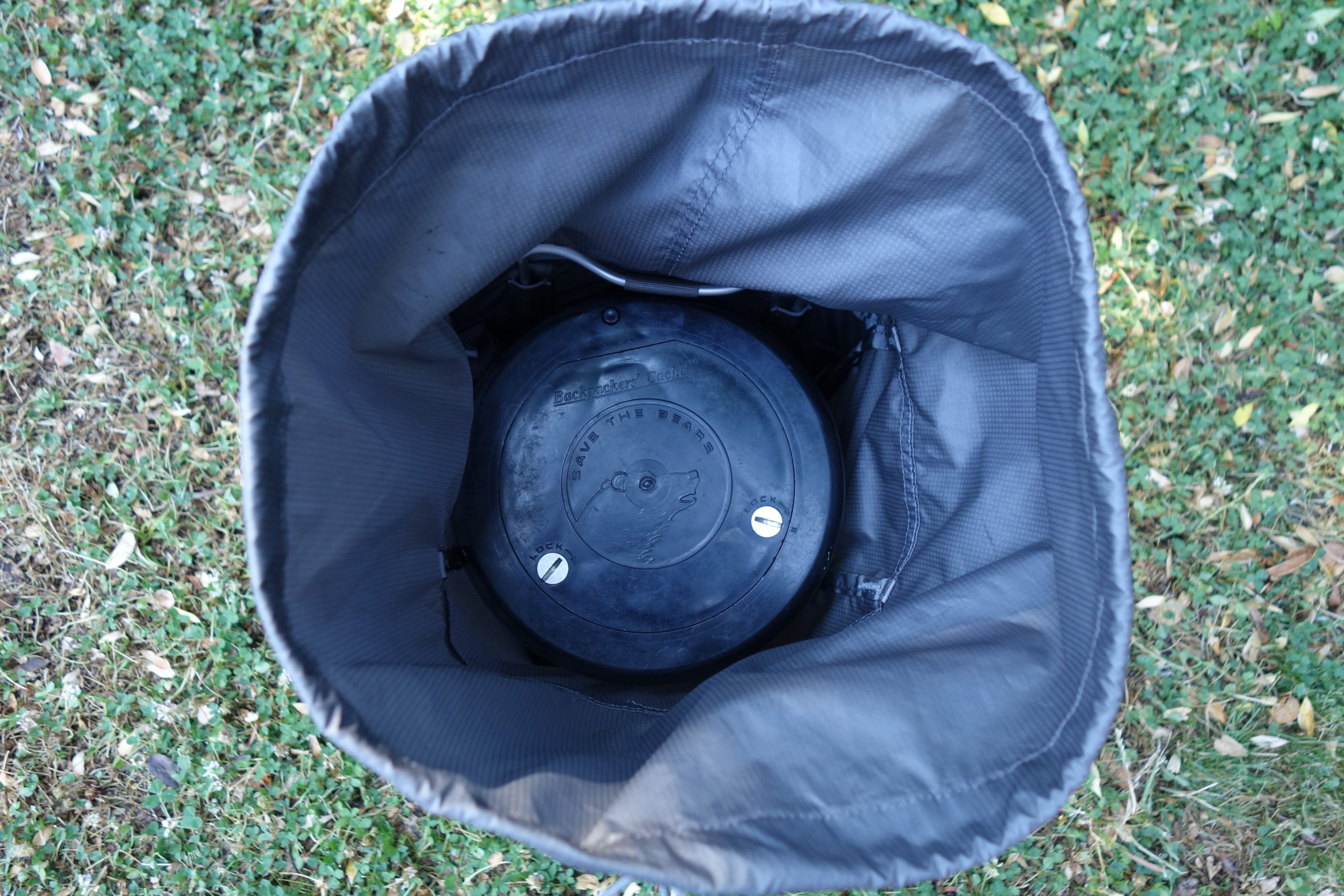
Extension collars are useful for bulky items like bear canisters. Photo via Owen Eigenbrot
Waterproofness
It’s simple. Some packs are waterproof, others aren’t. Waterproofness is convenient because you’ll never need to stop hiking to quickly throw on a rain cover when the weather changes. It also saves you the weight and expense of a separate rain cover. However, waterproof packs have some drawbacks of their own.
For one thing, they tend to cost more, and depending on the pack, this added cost outweighs any savings from not having to buy a pack cover separately.
Waterproof fabric can also trap moisture inside your backpack in addition to keeping it out. If you get the inside of your pack wet (perhaps by stuffing a wet tent or sodden clothing inside), it will be prolonged and difficult to dry out.
Straps and Buckles
Consider the size, number, and complexity of straps and buckles when choosing a backpack for thru-hiking. Straps can be used to adjust the pack’s fit and compress the load to fit snugly against your body. You can also use them to attach lightweight/oddly shaped items like foam sleeping pads, ice axes, and camp shoes outside your pack. Granite Gear backpacks are particularly excellent for hikers who need to strap a ton of stuff to the outside of their packs. Your personal gear, organizational preferences, and target base weight will influence your need for straps and buckles.
Step 6: Identify Your Price Point
A brand new backpack for thru-hiking costs hundreds of dollars. Ultralight packs made from cutting-edge materials such as Dyneema are the most expensive, especially from brands that offer custom designs. Larger and more tricked out backpacks also tend to cost more.
Because your backpack is one of the most critical pieces of gear you’ll own, it’s worth investing in a quality bag that fits and feels great. That said, it’s still possible to find great packs in just about any price range as long as you’re willing to put a little work into it.
Our picks for the best backpacks by price:
- Less than $100: Shop used gear, because you probably won’t find anything of backpacking quality for less than $150 new.
- $100-$200: REI Co-Op Trailbreak, Osprey Rook, Gossamer Gear G4-20
- $200-$300: Osprey Exos, ZPacks ArcHaul, Gossamer Gear Mariposa, Mountainsmith Zerk,
- $300 and up: HMG Southwest 3400
How to Pack a Backpack for Thru-Hiking
You waited until you had all your other gear so you could buy a pack that’s perfectly suited to your kit. You took all your measurements and found the perfect fit. And after evaluating many different offerings, you finally found the perfect one. Now, how the heck do you pack the damned thing?
Bottom
First, put something soft and light at the very bottom of the main compartment—your sleeping bag or quilt will work perfectly. You don’t want something too heavy at the very bottom, where it will bounce off your butt all day while you’re hiking. Putting soft stuff at the bottom also creates a stable base so that your bag doesn’t tip over the moment you set it down.
Middle
You should have your heaviest stuff, likely your food bag, just above this, centered on the small of your back. That way, you’ll keep a low center of gravity, and the majority of the weight will fit in close to your body.
Your tent, cooking gear, and any remaining camp clothes that didn’t fit at the bottom can go around your food bag to fill in the gaps.
Top
Finally, leave extra clothing layers and other stuff you might need during the day at the very top of your pack. This lightweight gear won’t throw off your center of gravity, and it will remain more accessible during the day. That way, you won’t have to dig through all your crap to pull it out.
Outside
Daytime essentials like your map or guidebook, first aid kit, water, and snacks should live in outside pockets. That way you can access them easily.
Tip: Pack your clothes and sleeping bag loose, rather than organizing them in stuff sacks, so that they can expand to fill any dead space in your pack. This makes for more efficient packing and saves you the weight of unnecessary stuff sacks. If your pack isn’t waterproof, make sure you have a waterproof liner (even if it’s just a large garbage bag) to keep your gear dry.
This is the subject of an entire article if you want to learn how to pack a backpack for a thru-hike.
How to Adjust Your Pack
If your load feels awkward or uncomfortable, a quick tug to adjust the tension of your straps often helps it sit better. Here’s how to adjust your backpack for thru-hiking with a perfect fit.
Hip belt
Start with your hip belt. It should directly cover your hip bones, leaving about three finger-widths of space between the top of the belt and your navel. Tighten the hip belt as much as you can. If properly situated and tensioned, it should shift most of your pack’s weight onto your hips. The hip belt can easily loosen throughout the day as you walk, so remember to re-adjust early and often.
Shoulder straps
They should be just tight enough to keep the load from falling backward away from your body, but not so tight that they dig in or lift the majority of the weight off your hips.
Chest strap
The chest strap can be both tightened and slid up and down. It should sit roughly at armpit height and should be tight enough to keep the shoulder straps snug without constricting your lungs. Make sure it goes straight across your chest and isn’t askew.
Load lifters
These are the two little straps above your shoulder straps on either side. Pulling them tight will keep the weight close to your body and centered above your hips for proper weight distribution. When in doubt, always check your load lifters!
